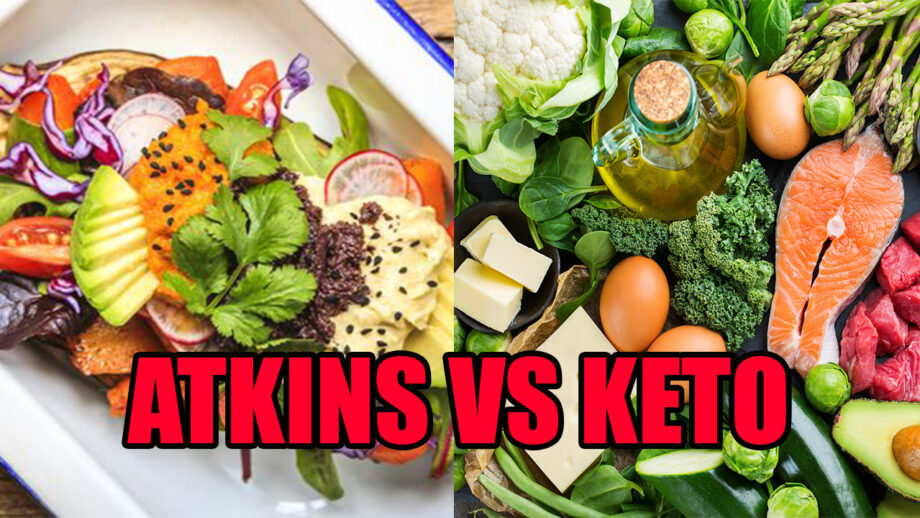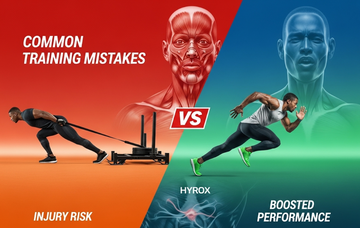Keto and Atkins are two popular diets including low-calorie meals to help reduce carbs intake significantly. However, due to their similarities both in terms of strict abstinence, weight-loss effectiveness, there are some differences between Keto diet and Atkin diet.
If there was a chart for the most popular low-carb diets, Keto diet and Atkins diet would definitely come out on top. "Both require strict low-carbohydrate meals," said Erin Dolinski, clinical nutrition and regulatory specialist at Beaumont Hospital, Royal Oak, Michigan.
With these two diets, not only do we need to cut down on bad carbs like cakes and cookies but also fruits and some vegetables. Limiting the amount of carbs is essential since it leads to the ketosis situation - burning fat to generate energy for the body when glucose is depleted. As a matter of fact, ketosis plays an important role and affects the sustainability of each diet over the long term.

An Overview Of How The Atkins Diet Works
The Atkins diet was introduced in 1972 by a cardiologist, Robert Atkin, and has become well-known all over the world so far. The original version of the regime (now called Atkins 20) consisted of four stages. In particular, the first stage requires the strictest carb compliance.
With Atkins diet, protein and fat can be eaten quite comfortably, but carbs need strict limits, only 20-25g net carbs (net carbs = total carb - fiber) in the first phase called Adaptation. Low-calorie meals that can be eaten include nuts, vegetables, cheese, etc. Only with this carb, your body will enter a state of ketosis and stay in this stage until it is about 15lb away from the target.
The second phase (Balancing) increases carb distribution by 25 - 50g with foods that can be added to the diet such as blueberries, cheese and yogurt, etc. This phase will last until You are about 10lb ~ 5kg from your target.
In the third stage (Adjustment), you will increase from 50 - 80g net carbs per day to try to find out how much carbs you can eat without gaining weight. Weight loss during this stage will be slower and you will have to test multiple carb levels to determine the “standard carb level” you can eat without getting fat.
An Overview Of How The Keto Diet Works
While the Atkins regime requires you to go through four stages with different principles, Keto only needs you to follow a single principle that applies to the whole process: The amount of carbs has to be cut down to 5% of the total daily calorie intake. To be specific, 75% of the calories come from fat, and the remaining comes from protein. After a few days of using this low-carb diet, your body will enter the ketosis state.
Researches published in November 2017 in Diabetes and Metabolic Syndrome: Clinical Studies and Reviews have shown that people who follow Keto diet for 10 weeks went through a significant change in weight, fat percentage, body mass index (BMI) and hemoglobin A1C (glucose-binding hemoglobin concentration). There is also growing evidence that the Keto regime can improve epilepsy in adults, but this still needs more research.
Besides, the accumulation of ketones in Keto diet can cause a lot of side effects such as nausea, headache, fatigue, and bad breath. It can also lead to a deficiency of essential vitamins as well as increases the risk of kidney stones, and heart disease, depending on the type of good or bad fat practitioners eat.
Similarities Between Keto Diet and Atkins Diets
With both diets, Dolinski suspects that practitioners will lose weight mainly due to the loss of water in the early stages. Because carbs retain water, and they will quickly regain weight when returning to the usual condition.
For example, a study published in the journal Cardiology in November 2014 has claimed that individuals who follow low-calorie meals of the Atkins regime lost about 2.5 - 5kg after a year, although the weight can be slightly regained at the end of next year.
Another similarity between Keto diet and Atkin diet is that you won't have to focus on counting calories, but need to carefully monitor the amount of carbs you eat each day. As for the Keto diet, you need to make sure that the percentage of calories getting from fat and protein is "standard".
Differences Between Keto Diet And Atkins Diet
The first difference between the Keto and Atkins diets is the amount of protein allowed in the body. With Atkins low-calorie meals, protein intake is unlimited while with Keto low-calorie meals, the protein level will be limited to about 20% of daily calorie intake.
One other difference is that the ketosis process will take place during Keto eating, while with Atkins, this process is mainly maintained in the first two stages. Following Atkins, you will be eating carbs more comfortably in the final stage, while with Keto, your carb intake will always be limited. This means the Atkins diet is easier to maintain because it does not limit the amount of carbs too much or require the body to stay in a state of ketosis. Furthermore, you can still include other nutritious foods like oatmeal, quinoa and fruits while following Atkins low calorie meals.
Which Diet Is Easier To Follow?
To evaluate which diet is easier to follow, nutritionist Michelle Jaelin asserts that it depends on the needs and eating habits of each person. There's no such thing as an easy low-carb diet because they can all lead to side effects like dizziness, lack of nutrients, and fatigue. On a 5-point scale, the US News & World Report assessed the ease of implementation of the Atkins regime at 1.8 and the Keto at 1.4.
According to dietitian Jaelin, low-carb diets including Atkins and Keto should not be used for people with diabetes, heart or kidney disease: "For the average person who doesn't have any chronic diseases, these diets can be safe in the short term". However, a study published in the American Family Physician showed that low-carb diets are more effective than low-fat diets in reducing triglycerides and hemoglobin. A1C also increases the level of "good" HDL cholesterol.
A low-carb diet is unlikely to have a good impact on human health in a long period of time partly because practitioners can hardly follow this low-carb style completely. Another study published in February 2017 in the journal BMJ Diabetes Care and Research looked at 10 low-carb studies and found that dropout rates ranged from 2% to 60%.
So, if you are considering a low-carb diet to follow, see the doctor or a dietitian first before deciding to start which one.
Related Articles:
- Mediterranean Diet - A Guide For Your Meal Plan
- 8 Common Fat Loss Mistakes You're Making
- Alkaline Diet - All Practitioners Need To Know










